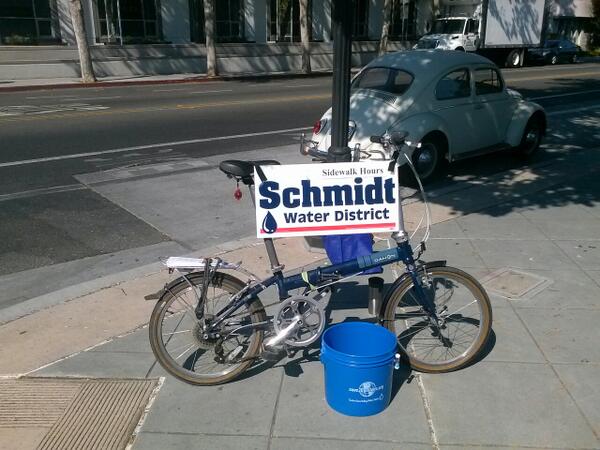Explication: It has been pointed out to Eli that the Kzinti lesson is a bit obscure and maybe even not the right description of Richard's tactics. In one of the books about Known Space, a human is forced to challenge some kzin, which he does with a fairly elegant short speech (imagine an academic doing a polite, but very firm refutation of someone else's paper).Richard Tol is an interesting character, interesting, not admirable. As he himself is proud of mentioning he ranks high in the h-number sweepstakes amongst economists as the most cited for this or that like 9th in the 2007 Top-40 of Dutch Economists (a productivity ranking); 18th in 2006; 2nd in 2005; 18th in 2004, 25th in 2001; not ranked in 2002 and 2003, go read his CV. OTOH, until last year, he never had a permanent position. Lots of jobs, visiting professor here, adjunct professor there and his interactions with others have always been. . . . . difficult.
The kzin tells the human that his challenge was needlessly verbose: a kzin would just "scream and leap". Of course, kzin have learned that sometimes they need to apologize, sometimes.
Richard's way of dealing with anyone who questions Richard is full throated Kzinti roar and attack. For the most part this succeeds because few want the joy of dealing with an axe murderer, and Richard does an excellent impression. This discourages criticism.
However, over a long enough time, the act wears thin, and the Kzinti run up against people who ain't gonna take it. In Richard's case, Frank Ackerman, who with Charles Muntz published a paper about a divide by zero flaw in the FUND model. Ackerman relates how this inspired Tol
to launch a relentless, multi-year campaign to have the article retracted, and to discredit me – including hostile letters about me to my former and current employers.Eli made the same point in the middle of the set to about Tol's dissing the IPCC as did many others. Ackerman is back with an analysis of Tol's contribution to the IPCC WG II report and an associated review article.
On the one hand, I am delighted to report that this campaign was essentially a total failure. The article was not retracted, and achieved much higher visibility due to Tol’s critiques. I very much appreciate the support of numerous economists, and of my former and current employers, who have all made public statements opposing the vendetta against me and my article.
On the other hand, the ensuing debate – focused on a specific flaw in FUND 3.5, which has been fixed in later versions – has distracted attention from the underlying issues which my coauthor and I sought to raise in our article. Compared to many other researchers, Tol’s work in general argues for an overly optimistic view of climate change, and a correspondingly less urgent approach to climate policy.
Tol’s 2013 review article, despite its appearance of objectivity, is founded on faulty selection of data and analyses, and contains interpretive flaws that make its facile conclusions unsupportable. First, it highlights 16 studies, some of them very old, from a handful of authors, as if they represented all we know about climate damages.This does not even get into the gremlins fiasco that consumed Retraction Watch and others with Eli taking a bite or two about how Richard managed to mangle a whole bunch of signs. As Andrew Gelman (the others) put it, even if you correct the signs, the model makes no sense.
Second, it identifies a larger number of studies of the social cost of carbon, more than half from the same handful of authors, and then focuses almost entirely on the subset of results with a high discount rate. Where it reports on my own work, the survey clearly misrepresents the original published source.
Third, it purports to prove that low-carbon stabilization targets are expensive by ignoring models and analyses that reach these targets, but making ad hoc adjustments to other analyses that fail to describe a path to a stable climate.
The field of economic analysis of climate change is a work in progress, with many interesting, sometimes contradictory, developments and approaches appearing in recent years. Most of the field, and most of what economists are writing about climate change, cannot be seen through the narrow, distorting lens of Tol’s review article.
Frank Ackerman points out that selective citing drives Richard Tol's conclusions.
Even a stable, gremlin-free version of this curve is problematical, however. It treats a narrow and dated collection of studies as the best available estimates of the economic severity of climate change. . .Somebunny in the editorial offices and the WG II working group should have smelled a problem, but as Eli said, Richard is very aggressive. Ackerman, could have recycled his summary of Bjorn Lomborg's Cool It to describe Richard's body of work
Despite the appearance of 16 different studies, Tol’s data represent the views of a small circle of economists, some of them counted repeatedly as their estimates evolved over the years. As Tol notes later in his article, “the researchers who published impact estimates are from a small and close-knit community who may be subject to group-thinking, peer pressure and self-censoring.”
He offers a definitive-sounding explanation of the climate problem for a nontechnical audience, identifies and summarizes recent research, and tells his readers who to trust and who to doubt. This claim of authority fails both because the book is riddled with small inaccuracies, and because it displays a pervasive bias in its coverage and evaluations of climate issues.Eli might speculate that the 97% wars on top of the IPCC WG II fiasco and the gremlin attack may have caused Richard to lose control of the dialog. One may hope.



.jpg)

